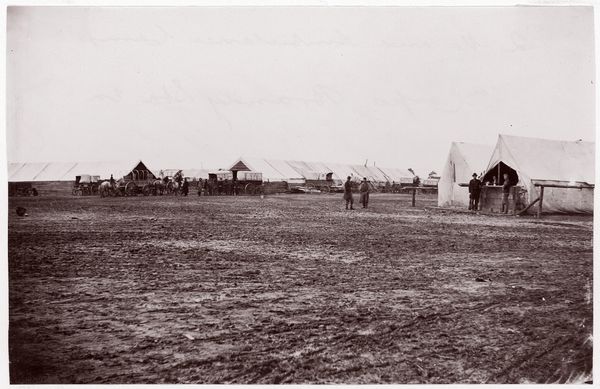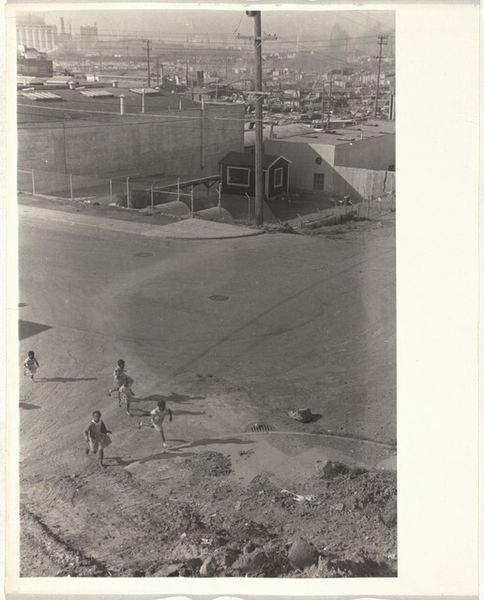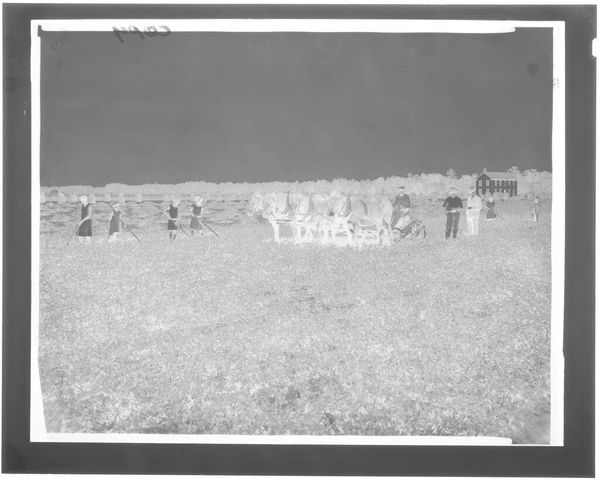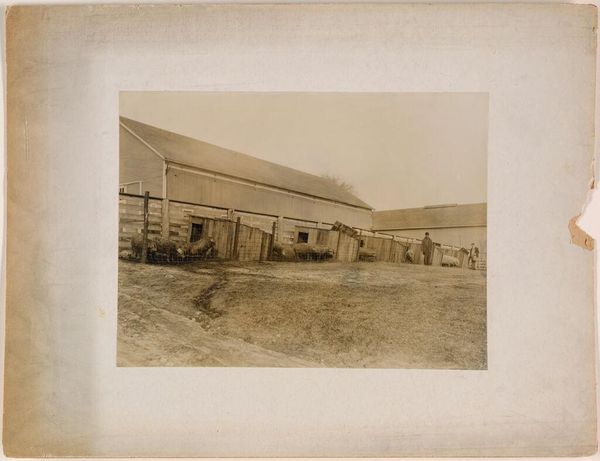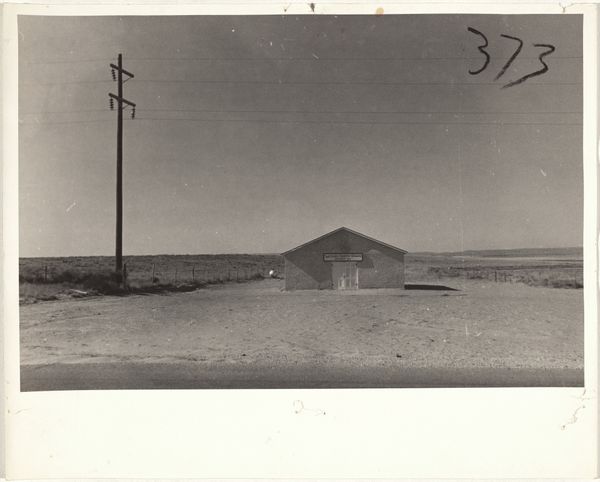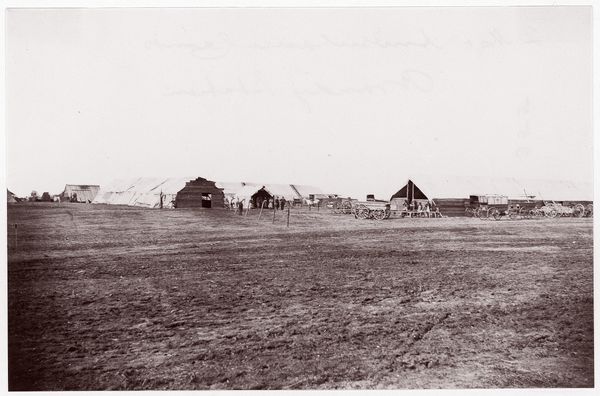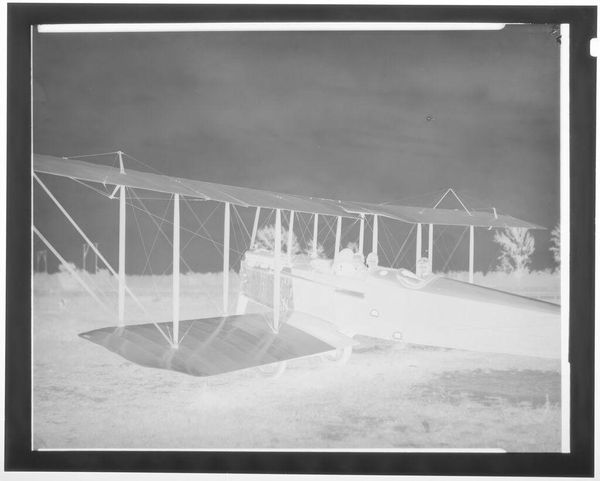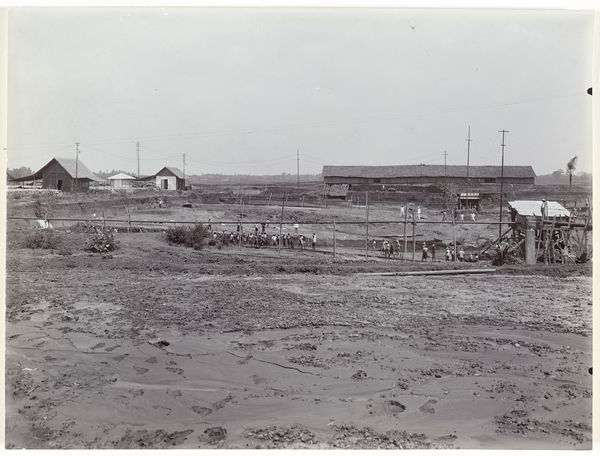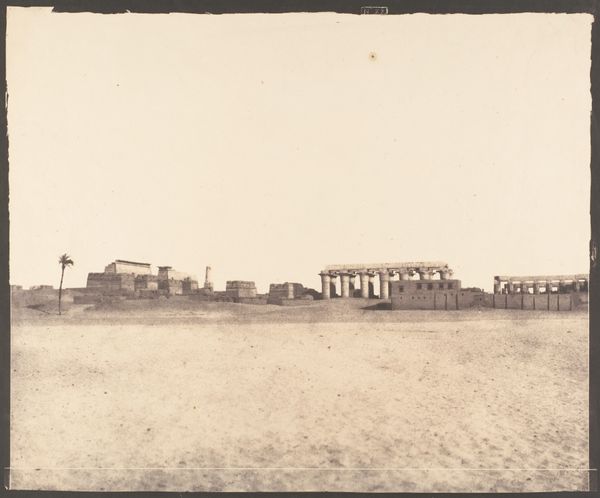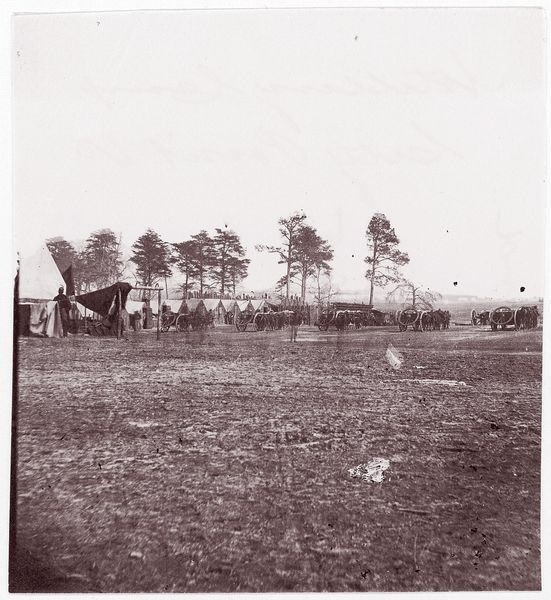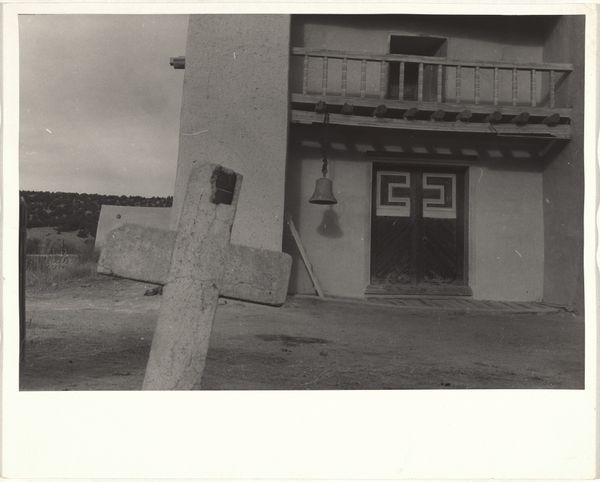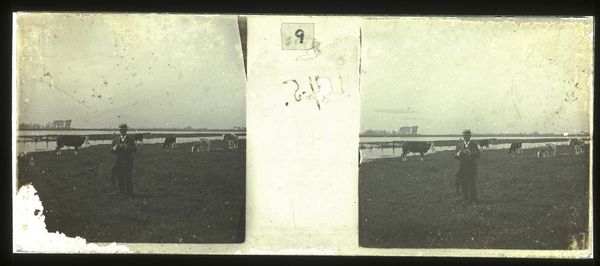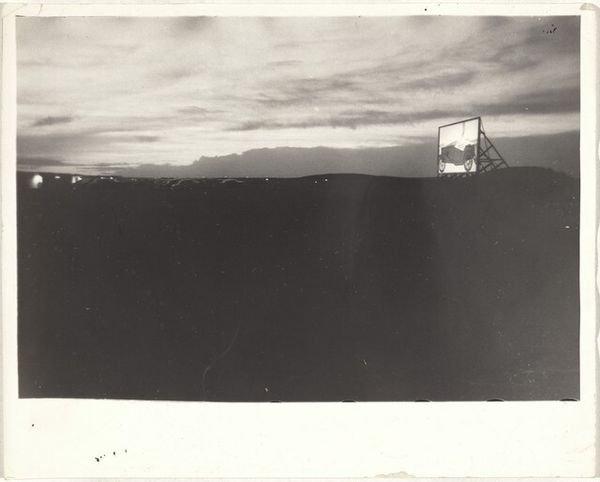
Adobe school with children in playground--Santa Fe or Taos, New Mexico 1955
0:00
0:00
print, photography
#
print photography
# print
#
landscape
#
street-photography
#
photography
#
genre-painting
#
realism
Dimensions: sheet: 20.3 x 25.2 cm (8 x 9 15/16 in.)
Copyright: National Gallery of Art: CC0 1.0
Art Historian: We’re looking at a photograph titled "Adobe school with children in playground--Santa Fe or Taos, New Mexico," taken by Robert Frank in 1955. It’s a black and white print. Curator: My initial reaction is drawn to the composition’s stark contrast—the dark adobe building sharply defined against the bright, almost bleached sky. The horizontality dominates, yet the active diagonals of the playground equipment inject a crucial sense of dynamism. Art Historian: Absolutely. The adobe schoolhouse acts as this grounding element, a silent witness. Adobe, of course, carries deep cultural weight in the Southwest. It speaks of indigenous building traditions, resilience, and a connection to the land that stretches back centuries. And note the children—their presence signifies the continuation of these traditions into the future. Curator: True, the children give a sense of temporal layering, adding depth to what could otherwise be a rather bleak landscape. Yet there is a sense of a split—those on the swing set versus those pressed against the wall of the building, mirroring the contrast in value present within the grayscale palette itself. Art Historian: That spatial separation strikes me, too. Are they separate because of economic disparity or language differences? Frank’s work often touches on themes of alienation and social division within American society. The playground is intended for joy and freedom but perhaps highlights restriction for some children. The building might also represent something protective for some but looming and unwelcoming for others. Curator: Fascinating. The composition also leans on repetition. The windows, the fence posts—all these repeat like visual rhythms, reinforcing a sense of place but also perhaps, confinement? Note, for example, how these darker spots of near symmetry on the facade break with the amorphous freedom within the natural landscape in the background. Art Historian: It seems like even the positioning of children across different zones could suggest that too: on the swing set, on the merry-go-round, near the fence… In terms of cultural memory, the school embodies an imposed structure, a departure from the organic freedom of play. Are those places or are they roles prescribed or aspired to? Curator: Intriguing. In looking at its form, the starkness also recalls some documentary photography coming out of Europe during the interwar years and just after. Its bleak emotional tone aligns in some unexpected ways, given this subject matter might otherwise feel warm and idyllic. Art Historian: Thank you. Exploring this scene and thinking about these various facets definitely enriches my understanding of both this work and this time period in America. Curator: Agreed, examining how such basic visual devices underscore complex narratives always reveals how intentional and powerful photography can be.
Comments
No comments
Be the first to comment and join the conversation on the ultimate creative platform.
